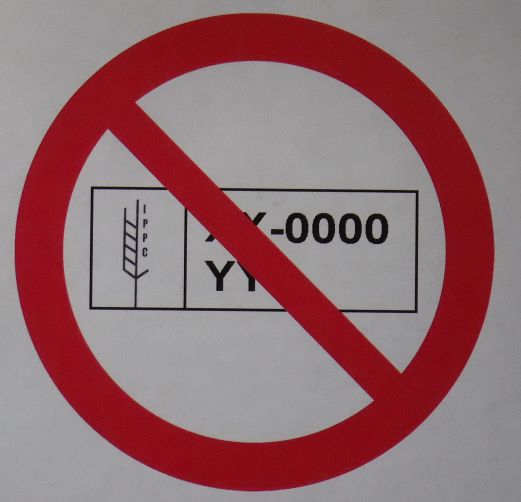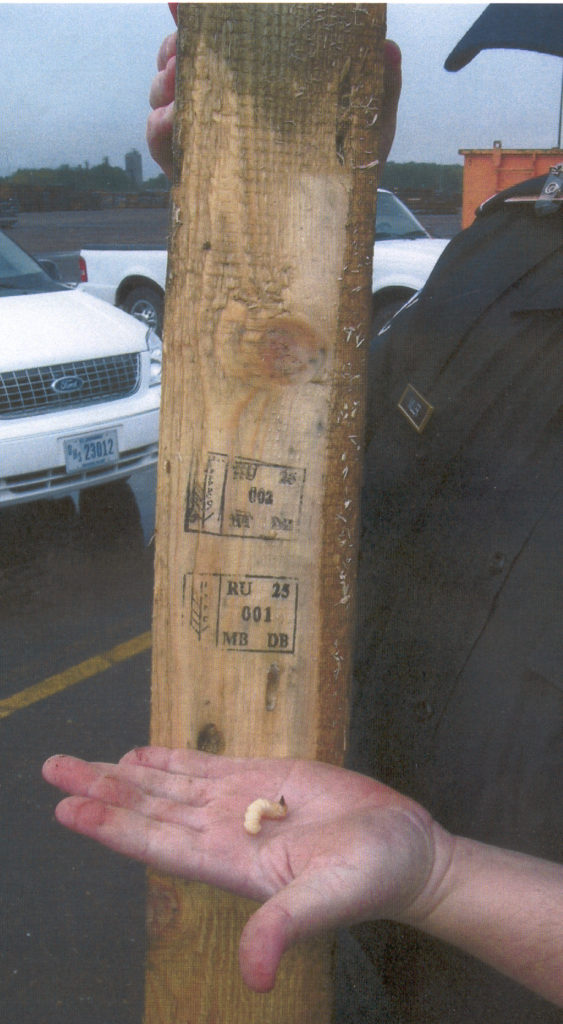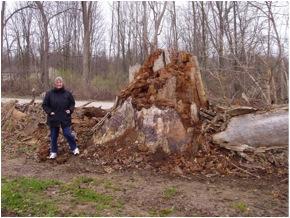I have posted nearly 40 blogs about wood packaging (SWPM) since 2015. [You can view these by scrolling below archives to find category “wood packaging”.]
I first raised the need for APHIS to authorize Robert Haack to update his study analyzing pest “approach rates” in wood packaging in July 2018.
Why?
- SWPM has delivered our worst forest pests.
SWPM has been recognized as a major pathway of introduction of wood-boring insects for 30 years. Examples include the Asian longhorned beetle, emerald ash borer, redbay ambrosia beetle, and, possibly, the invasive shot hole borers.
For decades, pest-infested wood packaging has come primarily from the same countries: Mexico, Italy, China, and, more recently, Turkey. Many of our most damaging invaders have come from Asia so growing import volumes from Vietnam and other Asian countries also raise concern.
2) The U.S. and Canada have required that wood be treated to kill pests for at least 16 years.
The U.S. and Canada fully implemented the international standard on wood packaging (ISPM#15) in early 2006 – nearly 17 years ago. They had earlier (1999) required treatment of SWPM from China – nearly 24 years ago.
3) Even old analyses concluded that more than 11,000 incoming containers harbored wood pests each year.
The U.S., Canada, and Mexico import more than 31 million shipping containers per year (see “Background” below). Applying decade-old estimates to this number, we conclude that 11,600 of these containers are probably transporting a quarantine wood-boring pest. About 80% of the containers – and probably the pests! – come to U.S. ports. This pest risk is not limited to the West Coast; expansion of the Panama Canal and congestion at West Coast ports mean that an increasing number of ships are travelling directly to ports on the East and Gulf coasts. These region have already been demonstrated to be highly vulnerable to pests from Asia (ranging from Dutch elm disease and Asian longhorned beetle to laurel wilt and beech leaf disease.)
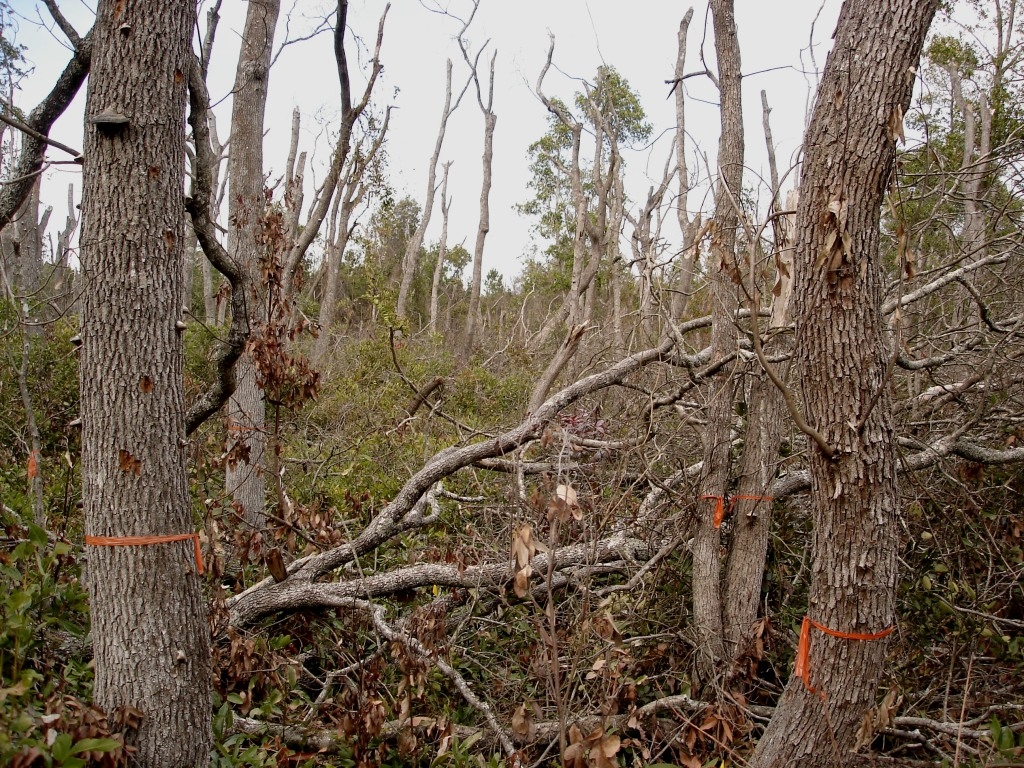
4) Efforts to reduce the pest “approach rate” have not worked yet.
Meantime, administrative efforts to reduce the numbers of containers carrying pests have not been successful. The Bureau of Customs and Border Protection (CBP) has tried. CBP began penalizing individual shipments that are not in compliance with ISPM#15 in 2017 — 5 years ago.
As of the first three-quarters of Fiscal Year 2022 (John Sagle pers. comm. and Crenshaw-Nolan of CBD to Continental Dialogue on Non-Native Forest Insects and Diseases, September 2022), CBP has issued 510 Emergency Action Notifications (EAN) for noncompliant SWPM. About 38% (194) were issued because actionable pests had been discovered. The rest were issued because the ISPM#15 stamp (attesting to the wood having been treated) was either missing or fraudulent. The full-year interception rate will probably be comparable to interceptions in recent years: in FY2021, 548 EANs; in FY2020, 509; in FY2019, 746. CBP staff are disappointed that interceptions have not declined.
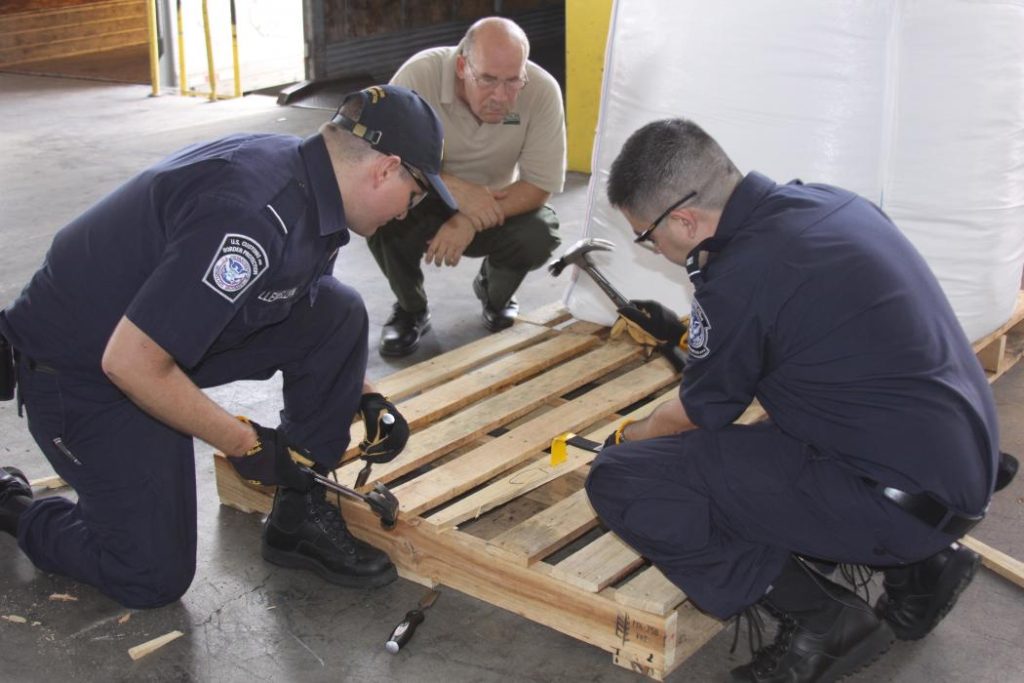
5) APHIS has avoided stricter enforcement.
APHIS has not adopted an enforcement stance. It has not stiffened penalties. The agency did not raise these phytosanitary issues when it negotiated a major agriculture trade agreement with China in 2020. The agency continued to insist that ISPM#15 is working – but agreed to work with Robert Haack to re-evaluate the approach rate only in 2021.
Correction: I became alarmed when the study had not been released four months after the analysis was completed (in May). I have since learned that the findings had not yet been completely written up and that internal reviews were proceeding. I apologize for the criticism in the original version of this blog. I impatiently await the study’s release, which I hope will be in a few weeks or months.
In the meantime, APHIS has also hired the Entomological Society to carry out an extensive study that includes analysis of interception data from five ports over a period of five years and rearing insects extracted from incoming wood packaging. I don’t want to postpone action aimed at curtailing introductions via this pathway for another five years!
APHIS has instead tried to improve foreign suppliers’ and phytosanitary agencies’ compliance with ISPM#15 through education. In partnership with Canada and Mexico, APHIS has supported two regional education workshops sponsored by the North American Plant Protection Organization (NAPPO). APHIS is now expanding its outreach to smaller companies, industry associations, and foreign suppliers. APHIS and CBP are now collaborating with an industry initiative to train inspectors that insure other aspects of foreign purchases. In addition, the International Plant Protection Convention (IPPC) is developing a “guidance document”. These educational efforts are supported by the U.S. pallet trade association, National Wooden Pallet and Container Association.
For all of these reasons we urgently need the updated data on the pest approach rate in the analysis by Haack and colleagues. Until we see these results, we can’t know the current level of risk associated with growing volumes of imports or assess the effectiveness of new policies. For example, CBP incorporated compliance with ISPM#15 into its government-importer partnership aimed at ensuring cleanliness of supply chains (C-TPAT) in February 2021. Only by comparing the results of the “approach rate” study with future data collected using the same techniques will it be possible to know how effective this action has been. I greatly appreciate CBP’s efforts.
There is still the issue of untrustworthy stamps.
Past data indicate a high proportion – 87% – 95% — of the SWPM found to be infested bore the ISPM#15 stamp. The same proportion was found in a narrower study in Europe (Eyre et al. 2018). Nor are all problems associated with Asia – importers in Houston have complained that stamps on dunnage from Europe also cannot be trusted.
While there are questions about whether this breakdown results from treatment inadequacy (i.e., 56oC for 30 minutes does not kill the larvae), failure of application, or of fraud –
What matters is that neither regulators nor importers can rely on the stamp to identify pest-free wood packaging.
(True: ISPM#15 was never intended to prevent pest introductions, only to “reduce the risk of introduction and spread of quarantine pests associated with the movement in international trade of wood packaging material made from raw wood.” Still, we should be trying to minimize pest introductions which threaten our wildland, rural, and urban forests.)
CPB’s experience indicates that cracking down on individual shipments will not be sufficient.
Immediate actions to hold foreign suppliers responsible
- U.S. and Canada refuse to accept wood packaging from foreign suppliers that have a record of repeated violations – whatever the apparent cause of the non-compliance. Institute severe penalties to deter foreign suppliers from taking devious steps to escape being associated with their violation record.
- APHIS and CBP and their Canadian counterparts provide guidance to importers on which foreign treatment facilities have a record of poor compliance or suspected fraud – so they can avoid purchasing SWPM from them. I am hopeful that the voluntary industry program described here will help importers avoid using wood packaging from unreliable suppliers in the exporting country.
- Encourage rapid switch to materials that won’t transport wood-borers. Plastic is one such material. While no one wants to encourage production of more plastic, the Earth is drowning under discarded plastic. Some firms are recycling plastic waste into pallets.
APHIS and CFIA have the authority to take these actions under the “emergency action” provision (Sec. 5.7) of the World Trade Organization’s Agreement on the Application of Sanitary and Phytosanitary Standards (WTO SPS Agreement). (For a discussion of the SPS Agreement, go to Fading Forests II, here.)
APHIS should also release the findings of the 2021-2022 study of approach rates by Haack and colleagues. Then the agency should invite stakeholders to discuss the implications, then develop and implement protective strategy reflecting its findings.
Longer-term Actions
APHIS and CFIA should cite their need for setting a higher “level of protection” to minimize introductions of pest that threaten our forests (described inter alia here.) They should then prepare a risk assessment to justify adopting more restrictive regulations that would prohibit use of packaging made from solid wood – at least from the countries with records of high levels of non-compliance.
APHIS and CFIA should also undertake the studies needed to determine the cause of the continuing issue of the wood treatment mark’s unreliability, then act to resolve it. Preferably, this work should be conducted with other countries and such international entities as the IPPC & International Forest Quarantine Research Group (IFQRG). However, if attempting such collaboration causes delays, they should begin unilaterally. Upcoming opportunities to address this issue include:
- FAO International Day of Forests in 2023
- FAO global assessment of forests & health – pest & disease outbreaks
Of course, these steps should be based on the findings of Haack and colleagues.

Meanwhile, what can we do?
- Urge Congress to conduct oversight on APHIS’ failure to protect America’s natural resources from continuing introductions of nonnative insects and diseases.
- These hearings should be in the context of drafting the 2023 Farm Bill.
- Raise the issue with local, state, and federal candidates for office;
- Urge Congress to include provisions of H.R. 1389 in the 2023 Farm Bill;
- Ask any associations of which we are members to join in communicating these concerns to Congressional representatives and senators. These include:
- if you work for a federal or state agency – raise to leadership; they can act directly or through National Plant Board, National Association of State Departments of Agriculture, National Association of State Foresters, National Governors Association, National Association of Counties
- scientific membership societies – e.g., Society of American Foresters, Entomological Society of America, American Phytopathological Society;
- individual conservation organizations, either with state chapters or at the national level;
- woodland owners’ organizations, e.g., National Woodland Owners Association, National Alliance of Forest Owners (NAFO) and their state chapters
- urban tree advocates
- International Forest Quarantine Research Group
- Write letters to the editors of your local newspaper or TV news station.
BACKGROUND: Calculation of the Number of Infested Containers Entering U.S.
As of 2020 (when trade was greatly depressed by the COVID-19 pandemic), nearly 31 million TEUs [a standardized measure for containerized shipment; defined as the equivalent of a 20-foot long container] entered North America. Ports in the U.S. received 80% (24.5 million); Canada 11.5% (3.5 million); Mexico ~9% (2.7 million). U.S. imports have grown substantially since 2020; during the first quarter of 2022 U.S. imports from Asia each month were 20 to 30% higher than in 2019 before COVID-19 disrupted supply chains (blog #292). The U.S. is projected to handle ~26 million TEUs in 2022 [sources here and here.
A “TEU” equals a 20-feet container. Most containers now are twice as large – 40-feet. Several steps are involved in applying findings of Haack et al. 2014 and Meissner 2009 estimates:
- divide estimated number of containers (26 million) in half = 13 million.
- Assume that three-quarters of that number (13 million) contain wood packaging (based on Meissner) = 9.75 million.
- If 1 out of each thousand of these containers with wood packaging is transporting a pest = 9,750 containers / year.
I performed the same calculation for North America-wide estimate of 31 million TEUs discussed at the beginning of the blog.
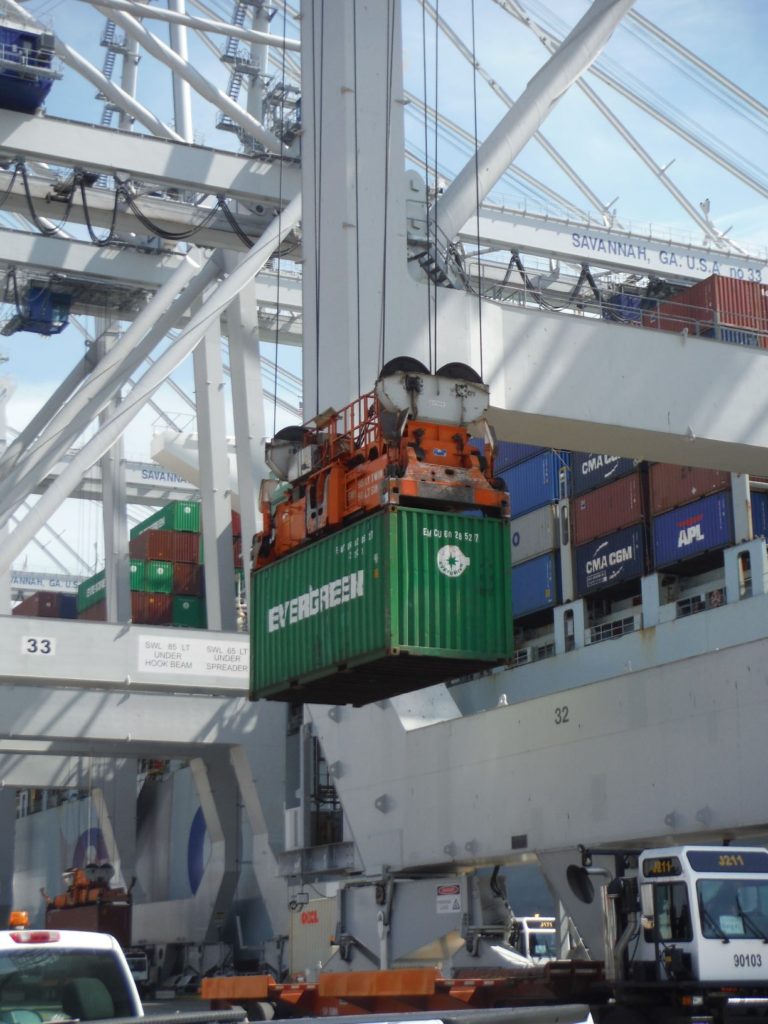
A separate study (Hudgins et al. 2022) projected that introduction of a new woodboring insect pest that attacks maples or oaks it could kill 6.1 million trees and cost American cities $4.9 billion over 30 years. The risk would be highest if this pest were introduced via a port in the South. I have blogged often about the rising rate of shipments coming directly from Asia to the American South.
An analysis of fungi associated with Eurasian bark and ambrosia beetles reached a conclusion that the authors consider to be more optimistic. Li et al. (2021) found that none of the 111 fungi was sufficiently virulent to trigger tree mortality after a single-point inoculation. This level of lethality was considered analagous to Dutch elm disease DMF or laurel wilt DMF. Thirty-eight percent of the fungi were considered to be weak or localized pathogens that could kill trees under certain conditions. However, they tested the fungi against only two oak and two pine species. They did not evaluate fungi that might be lethal when the vector beetle engages in mass attacks. Finally, I think phytosanitary agencies should act promptly when a pathogen threatens levels of mortality somewhat below Dutch elm disease and laurel wilt!
SOURCES
Hudgins, E.J., F.H. Koch, M.J. Ambrose, B. Leung. 2022. Hotspots of pest-induced US urban tree death, 2020–2050. Journal of Applied Ecology 59(5): 1302-1312.
Li, Y., C. Bateman, J. Skelton, B. Wang, A. Black, Y-T. Huang, A. Gonzalez, M.A. Jusino, Z.J. Nolen, S. Freeman, Z. Mendel, C-Y. Chen, H-F. Li, M. Kolařík, M. Knížek, J-H. Park, W. Sittichaya, P.H. Thai, S-I. Ito, M. Torii, L. Gao, A.J. Johnson, M. Lu, J. Sun, Z. Zhang, D.C. Adams, J. Hulcr. 2021. Pre-invasion assessment of exotic bark beetle-vectored fungi to detect tree-killing pathogens Phytopathology. 112(2): 261–270. https://doi.org/10.1094/PHYTO-01-21-0041-R
Posted by Faith Campbell
We welcome comments that supplement or correct factual information, suggest new approaches, or promote thoughtful consideration. We post comments that disagree with us — but not those we judge to be not civil or inflammatory.
For a detailed discussion of the policies and practices that have allowed these pests to enter and spread – and that do not promote effective restoration strategies – review the Fading Forests report at http://treeimprovement.utk.edu/FadingForests.htm
or
